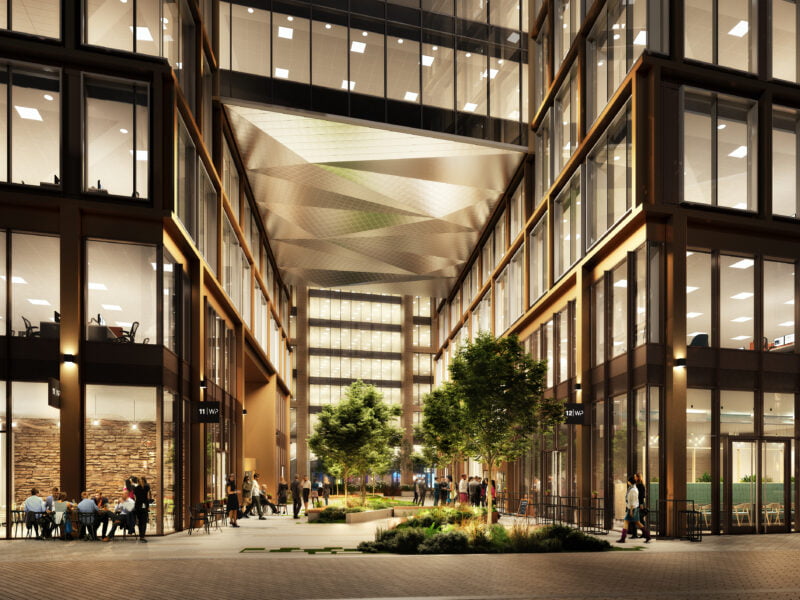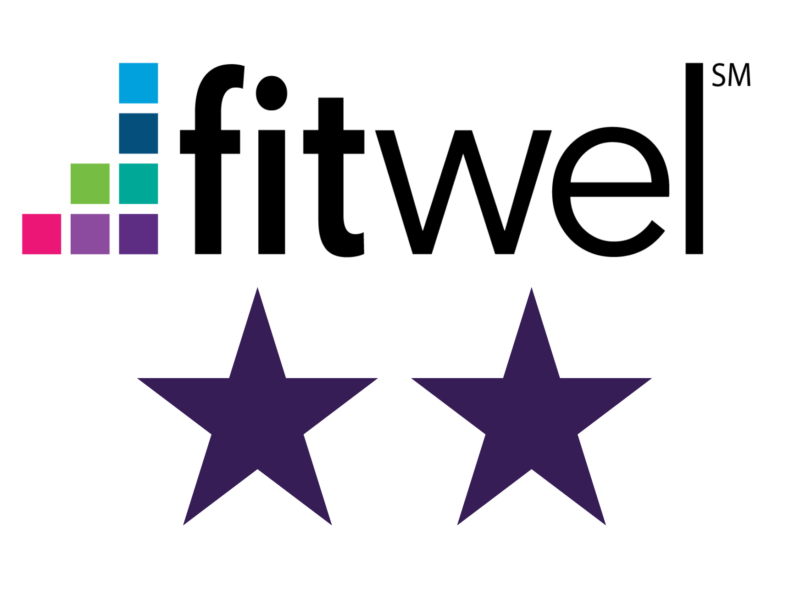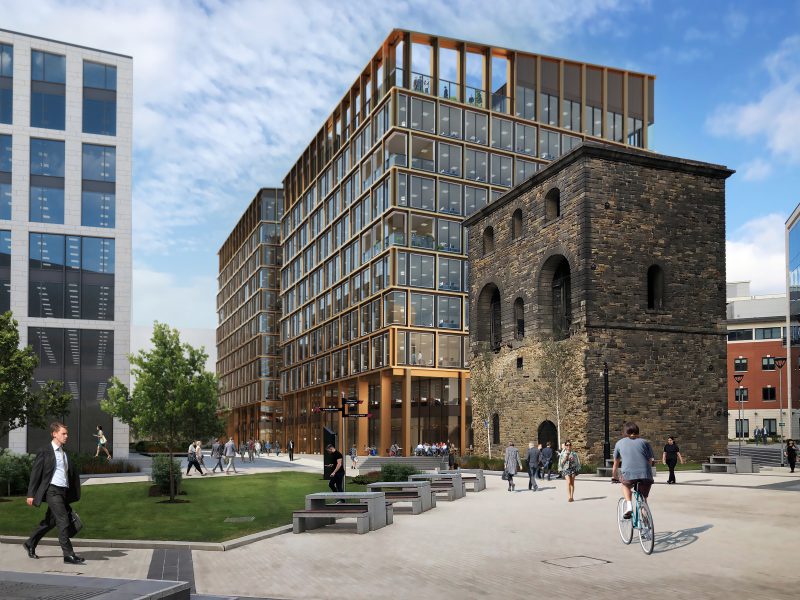Here at Wellington Place, we’re committed to building sustainable workplaces for the future. That’s why we’re incredibly proud of our most recent buildings, 11 & 12 Wellington Place.
Regarded as one of the UK’s most sustainable office developments, these new additions to Leeds’ cityscape became the first buildings outside of London to achieve a NABERS Designed Reviewed Target Rating of Five Stars or above.
NABERS is a hot topic in the built environment. But what does it actually mean? And why is it so important?
In this blog, we’ll break down the energy efficiency measurement system and explain why it’s transforming the UK office building sector…
What does NABERS stand for?
NABERS stands for the ‘National Australian Built Environment Rating System’. NABERS UK is the rating system for office buildings across England, Scotland, Wales and Northern Ireland.
What is the NABERS rating?
It’s a simple and reliable system for rating the energy efficiency of a building, both during its construction phase and throughout ongoing use.
Where did it come from?
Originating in Australia in 1999, NABERS is a world-leading environment performance rating tool for commercial buildings. In Australia, it’s used across many different types of buildings including hotels and shopping centres. In the UK, it’s currently used solely for office buildings. Just like those at Wellington Place.
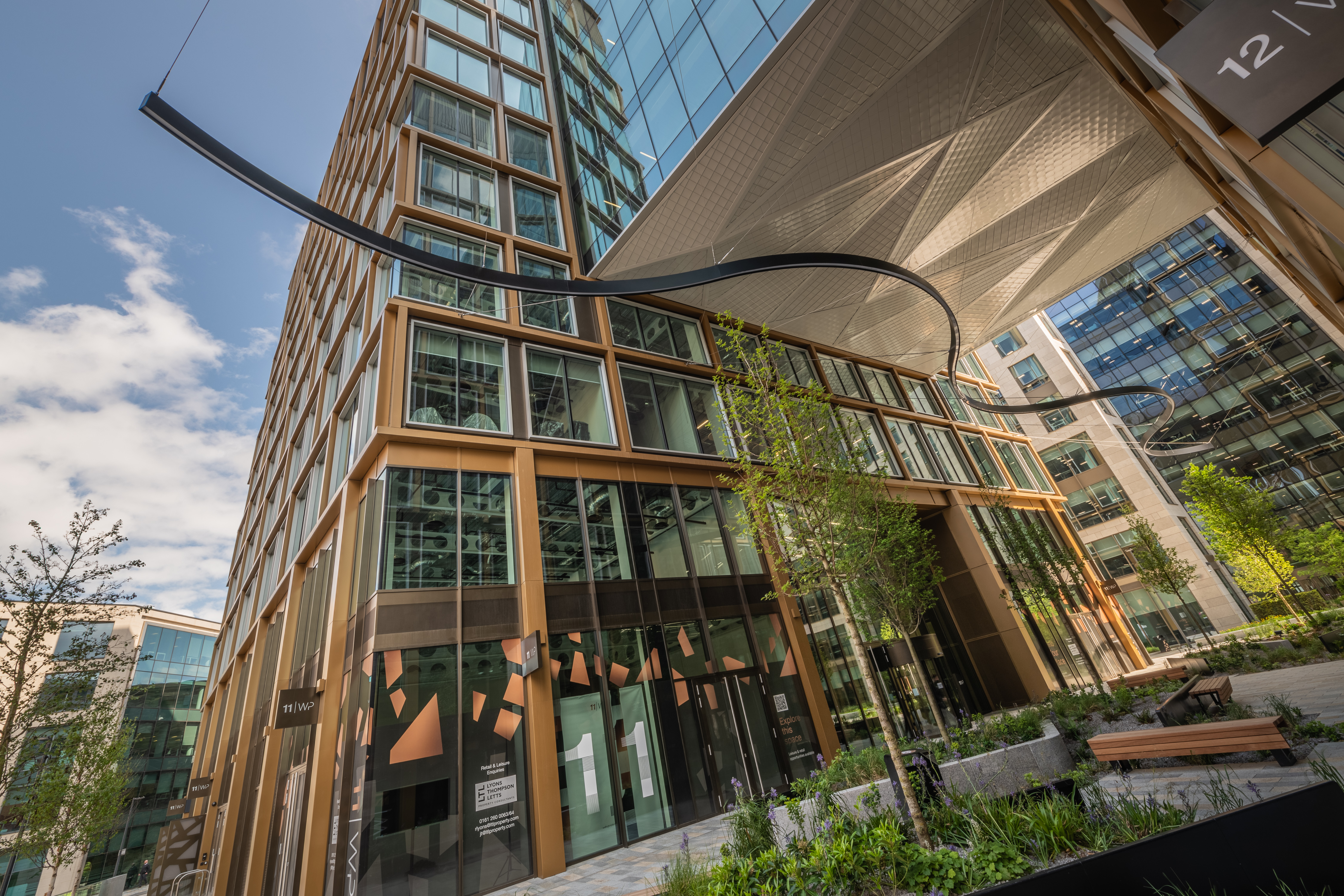
What’s NABERS UK?
A UK adaptation of NABERS, run by Building Research Established (BRE). It’s fast becoming the gold standard for assessing operational efficiency across the UK.
What is a NABERS rating?
Think of a NABERS rating like the star ratings that you get on your fridge or washing machine. Buildings will be given a rating from one to six stars according to their operational energy efficiency. One star stands for making a start. From there, you can rise through the ranks to reach five stars (excellent) or a top-of-the-class six stars, which means the building is market-leading. These stars help building occupiers and owners understand how their building is performing and can also be used to gauge future progress.
How long are the ratings valid for?
It’s an annual model, meaning ratings last a full year.
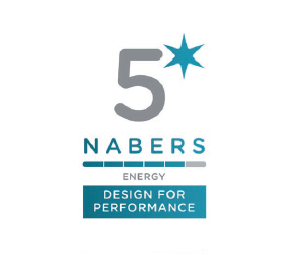
What makes NABERS different?
What makes NABERS unique, is that it not only rates a building’s energy efficiency from the design and build stage, but also on an ongoing basis while in operation. Traditionally, other ratings are awarded when a building has reached completion. However, just like your own home, buildings change over time and performance can drop.
This is where NABERS is different. Rated buildings are reviewed on a yearly basis, allowing occupiers and owners to accurately track the energy performance of their buildings and identify areas for improvement.
What are the accreditations for NABERS UK?
In the UK, there are two product offerings:
1. NABERS UK Design for Performance. This is when a developer or owner commits to design, build and commission a new office development or major refurbishment to achieve a specific NABERS energy rating. 11 & 12 Wellington Place was the first building outside London to achieve a 5.5 rating and the 4th in the UK.
2. NABERS UK Energy for Offices. This rating is used to measure how energy-efficient existing buildings are.
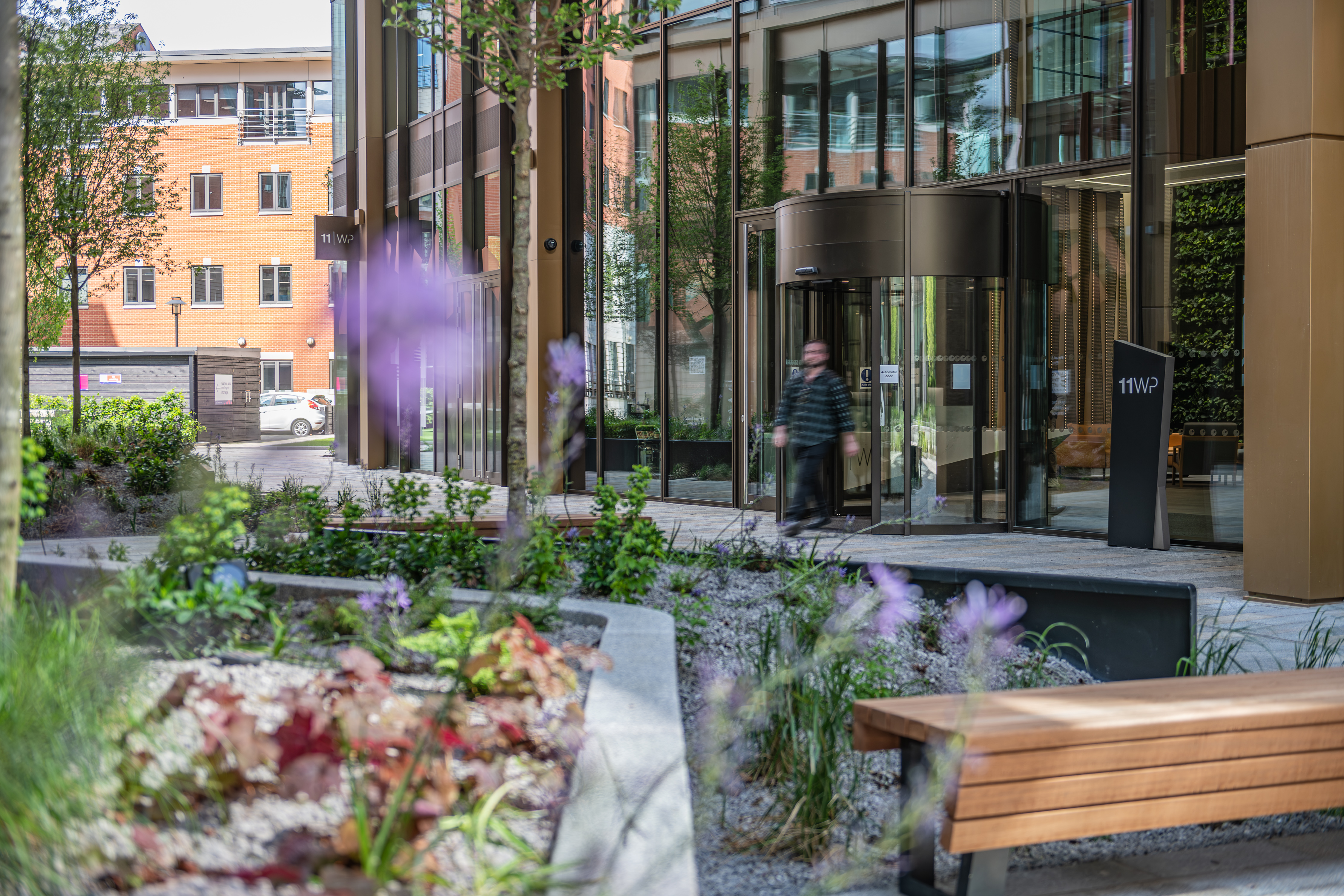
Why is it important?
Ultimately, NABERS encourages more environmentally friendly office buildings. It gives us a fair benchmark to assess a building’s energy efficiency, helping to keep sustainability at the forefront of construction and maintain important standards.
Not only is this better for our planet, but also for our people. These are key values at Wellington Place. We strive to build happy, healthy workplaces that are kinder to the environment and give our occupiers a sustainable office space to be proud of. As organisations increasingly prioritise Environmental, Social and Governance (ESG) strategies and staff become ever more environmentally conscious, NABERS will undoubtedly remain a key benchmark.
For the Wellington Place community, this rating is a vital component in our mission to create places and spaces that are doing right – both by people and planet.
Find out more about our sustainable approach here.

